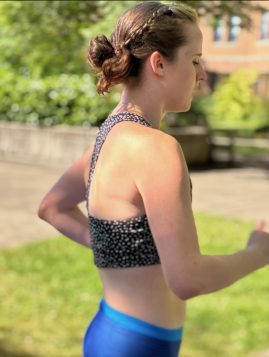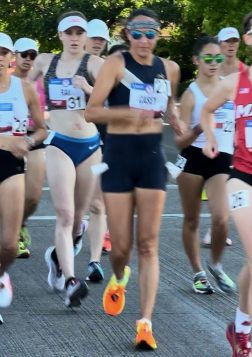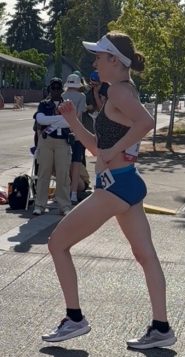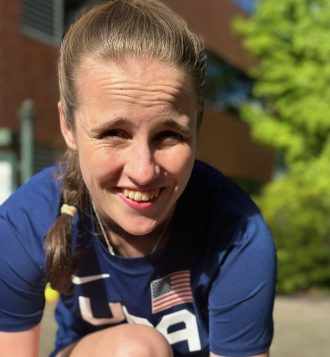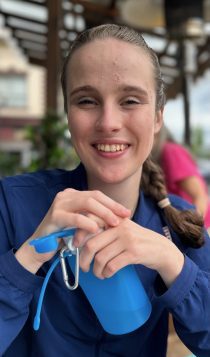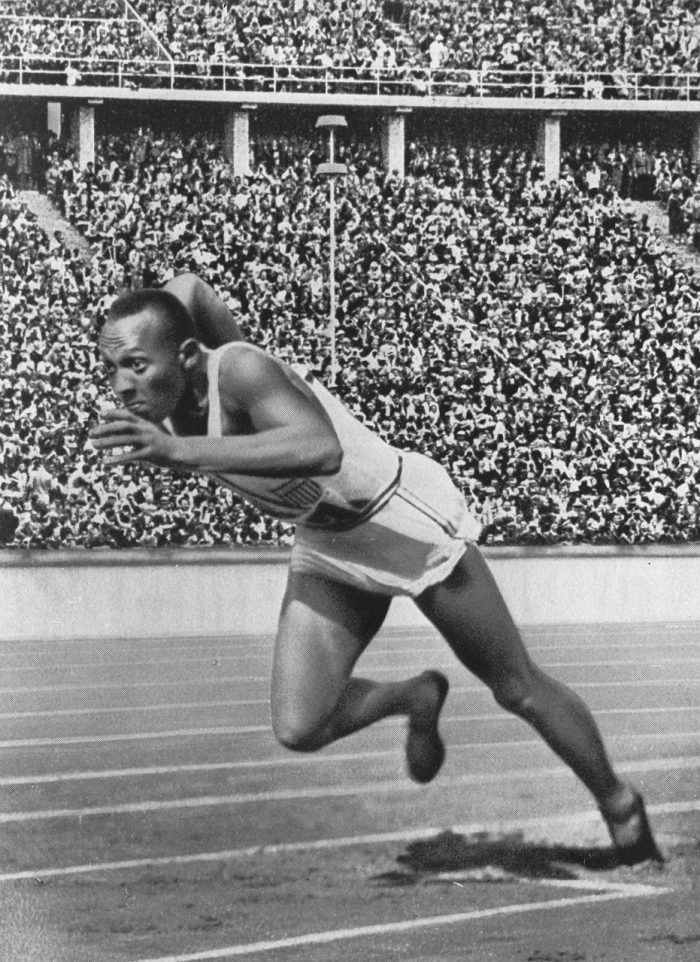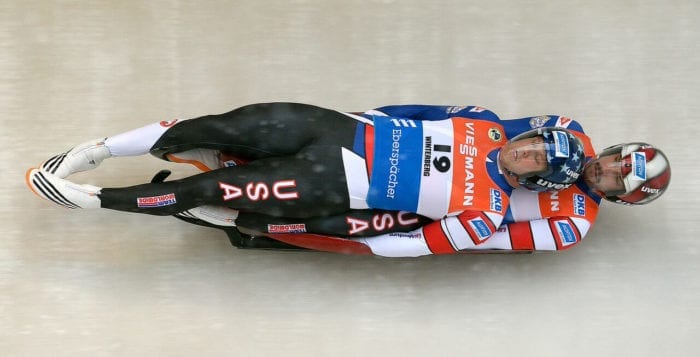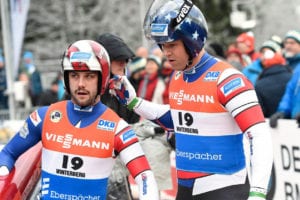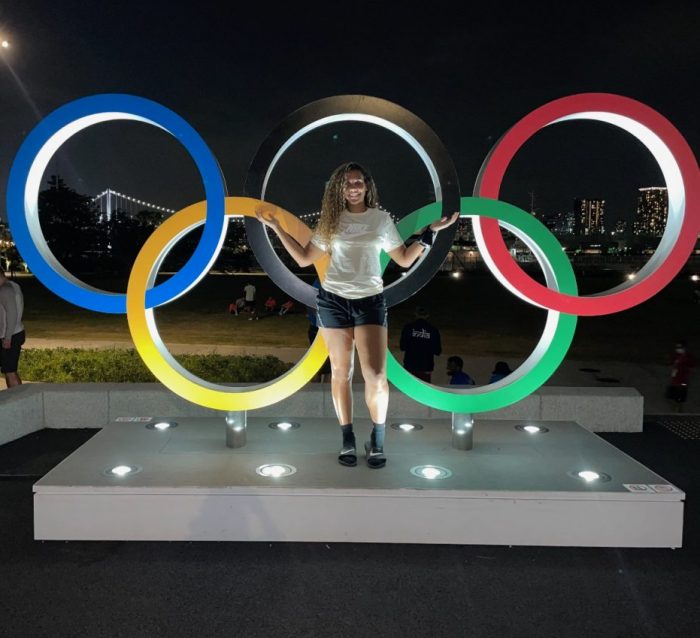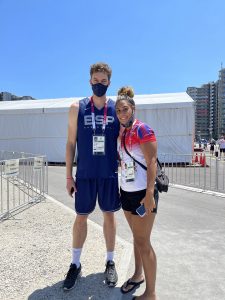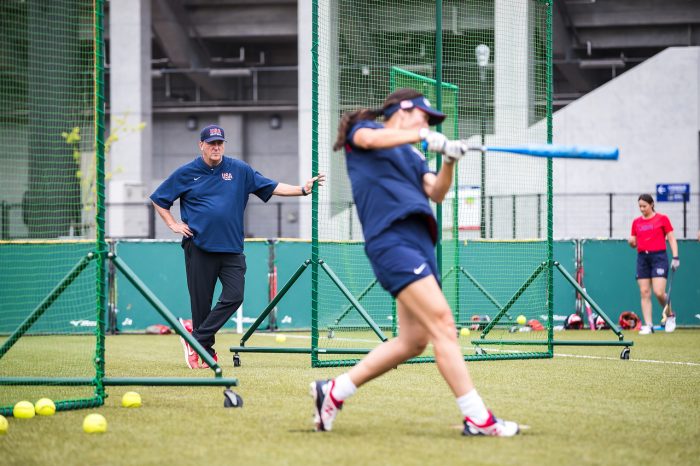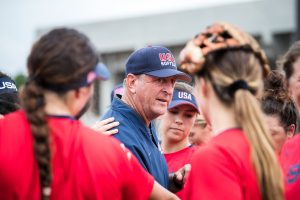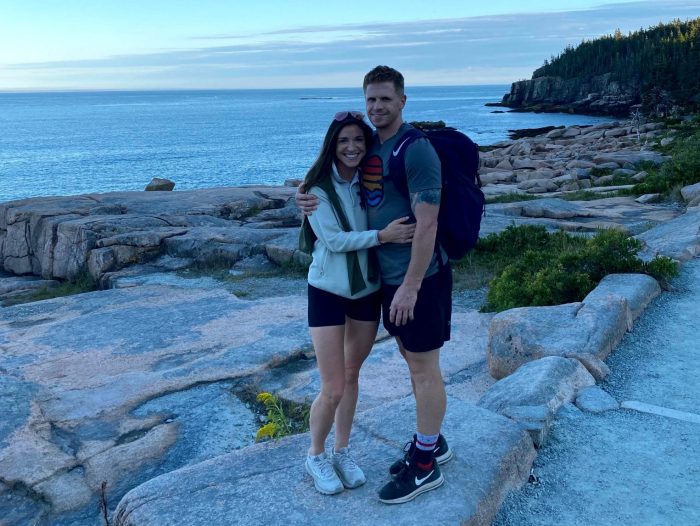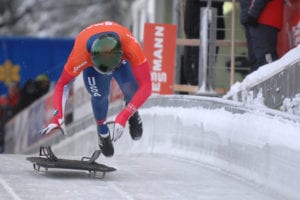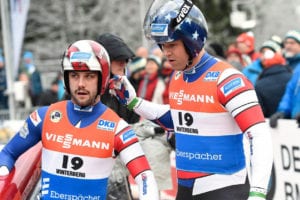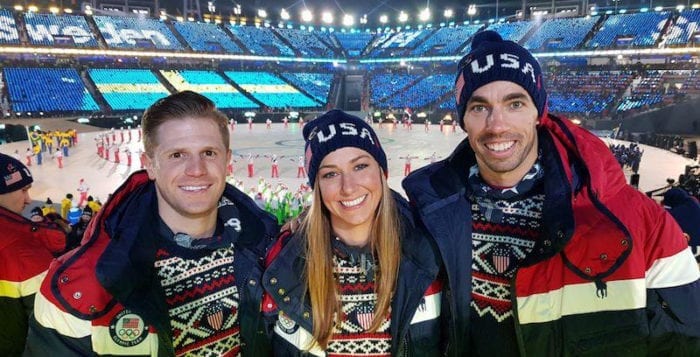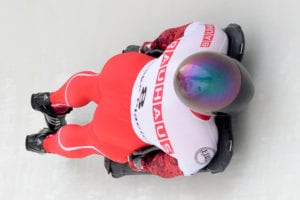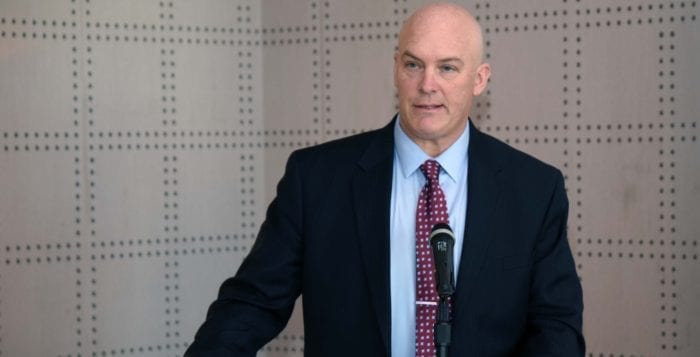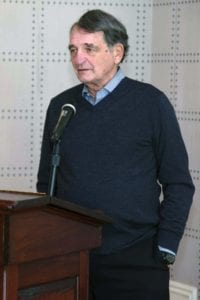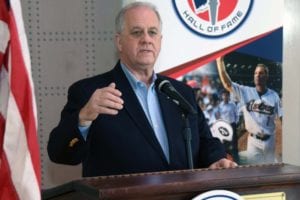By Daniel Dunaief
At shorter distances, she can walk faster than some people can run in a sport she only entered over two years ago. Driven to succeed, Ruby Ray competed on a national stage this past weekend, trying for a spot on the U.S. Olympic Team heading to Paris next month in the 20 kilometer (or 12.4 mile) racewalk.
A graduate of Earl L. Vandermeulen High School in Port Jefferson, Ray, 19, didn’t make the team, finishing in 9th place at the Oregon trials on Saturday, with a time of one hour, 54 minutes and 15 seconds. That is an average of 9 minutes, 13 seconds per mile for the entire race.
Ray, who had swollen glands and a fever from a cold the morning of the competition, made it through the race, rising as high as fifth place at the 2500 meter mark before dropping back to ninth.
“It was a wonderful experience competing in person with the greatest athletes in the United States,” said Ray. “I was a little disappointed with my performance.”
While her coach Gary Westerfield, founder of WalkUSA, was also hoping for a better time, he appreciated her effort under difficult conditions.
“I give her a lot of credit,” said Westerfield. “She could have dropped out.”
Westerfield expects Ray, who is a rising sophomore at St. John’s University, to build on this experience as she takes aim at the 2028 Olympics in Los Angeles.
A life-changing request
Ray followed an unconventional path to the Olympic Trials.
An aspiring field hockey player, Ray was disappointed when the school no longer competed in the sport. Ray switched to Track and Field.
One day when Ray was in her junior year, Brian Snow, the head coach of the women’s varsity Track and Field team, asked if anyone would be willing to try race walking as a way to earn more points for the team.
After watching a video of a sport that receives considerably more attention in places like Ecuador, Mexico and China than it does in the United States, the five-foot, eight-inch Ray agreed to give it a try, race walking up and down the hallway of the school, impressing Snow enough to encourage her to prepare to compete in high school races.
“That first year, she did really well,” said Snow. “She really helped the team. She was able to score points in important meets.”
Ray was named the Athlete of the Year in 2022 by USA Track and Field in racewalking for competitors under 20.
Snow appreciated not only how much she improved, but also her willingness to step up for the school.
“If we needed someone in a relay, she would do it,” said Snow.
The track coach recalled how Ray fainted during the school day. She went to the hospital to get checked out and then returned for the rest of the day. Ray volunteered to participate in the meet, but Snow opted against allowing her to race.
“She cheered on the team,” he said. “She put the team first. Her teammates always knew she was destined for greater things.”
In her first year of track, Ray was race walking at an event. Westerfield, a track official at the competition who is an accomplished racewalker and coach, asked her parents if he could start working with her.
Intense focus
An accomplished race walker who has only been in the field for two years, Ray brings a discipline and focus to a wide range of challenges.
Like her mother Madeleine Kristoffersson, who is an accomplished opera singer, Ray has put her vocal skills to work, joining the church at St. John’s as a cantor.
Ray has dual citizenship between the United States and Sweden, where her mother was born and raised.
Ray was also an equestrian. When COVID-19 shut down some of the events, she poured her energy into track.
When Ray started to compete in race walking, her mother knew about the event.
“In Sweden, that is a huge sport,” she said. “I have seen this from childhood and knew what it was. She looked like the people I had seen walking” in races.
Ray has received considerable help and encouragement from her parents. She trains twice a week with Westerfield. On the other days, her mother has gone with her to the track, recognizing when her daughter needs water or when she’s having a tough day.
“I live and breathe this with her,” said Kristoffersson, who traveled with Ray to Oregon for the Olympic trials.
A country commitment
For Ray and her parents, representing the country at the Olympics would be a significant honor.
Being the parent of an Olympian “would be the most wonderful experience I could ever have had,” said John Ray, Ruby’s father, who has a law practice in Miller Place. “I love my country. She grew up to love her country. She feels like she’s representing Port Jefferson and Long Island in the trials.”
Ray’s father, who suggests his singing skills are limited to the shower, has his own athletic pedigree, having played lacrosse for the last 58 years, including as a goalie on teams with men considerably younger than he.
Ray herself felt like being a part of the Olympics would be “incredible” and that she would be representing Long Island, Port Jefferson, Suffolk County, and “all the things I love. I would be showcasing it off to the world in the Olympics.”
In addition to contributing to her country with her athletic skills, Ray also joined the Reserve Officers’ Training Corp at St. John’s in the Army Rangers Program.
“My family has a long history in the military,” said Ray. “It’s a great honor to fight for your country and then come back and your family and county are proud of you.”
Ray regularly wakes up at 4:30 am for Ranger training. She has scars on her knees from crawling across the ground and bruises on her back from hiking with a heavy backpack.
“You have to stay dedicated,” she said. “You have to be willing to do what is required.”
She has had to sacrifice some time with friends, while avoiding temptations that might derail her athletic or academic goals as well as her ROTC training.
Ray is in the English Honors program at St. John’s, where she has a full scholarship.
While Ray is talented and focused, she shared a few guilty pleasures, which include dark chocolate Reese’s peanut butter cups, ice cream and cheesy popcorn.
Ray has three goals in mind. She’d like to make the Olympic team in 2028 and win a gold medal in Los Angeles, she’d like to make the track team at St. John’s, likely competing in the 5K running race, and she’d like to join the Judge Advocate General.
“I want to help people buried under the system,” said Ray, who participates in her father’s pro bono work. “My dad puts his heart into his effort and I want to do the same, especially in the military for people who fought for our country and deserve support.”
People who have known Ray for years wouldn’t bet against this determined teenager.
Ray will “do some amazing things in her life, regardless of what happens with race walking,” said Snow.
Ray reflected positively on her experience in Oregon.
“I was just astonished by the fact that we were there” at the trials, she said. “This new experience has given me hope to grow stronger.”

